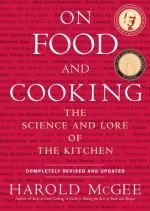|
This section contains 417 words (approx. 2 pages at 400 words per page) |

|
Edible Plants Summary and Analysis
Fruits and vegetables contain nearly all our consumed vitamin C, which aids in collagen replacement, folic acid, which lessens heart disease, vitamin A, which helps eyesight and much of our vitamin E. Plants also contain phytochemicals, or chemicals that modulate our metabolism. One such phytochemicals is the antioxidant. Oxidative damage to the body occurs during normal body processes, where oxygen generates chemicals called free radicals that can damage the body's chemical makeup. This damage can be in the form of tumors, damage to arteries, cataracts, macular degeneration in the eye and blindness, as well as in many other forms. The body staves off such damage through antioxidant molecules, which react with free radicals to neutralize their potential damage. Because plants live essentially through the conversion of oxygen, they are full of antioxidants such as beta-carotene, lutein, zeaxanthin, lycopene, chlorophyll...
(read more from the Edible Plants Summary)
|
This section contains 417 words (approx. 2 pages at 400 words per page) |

|




